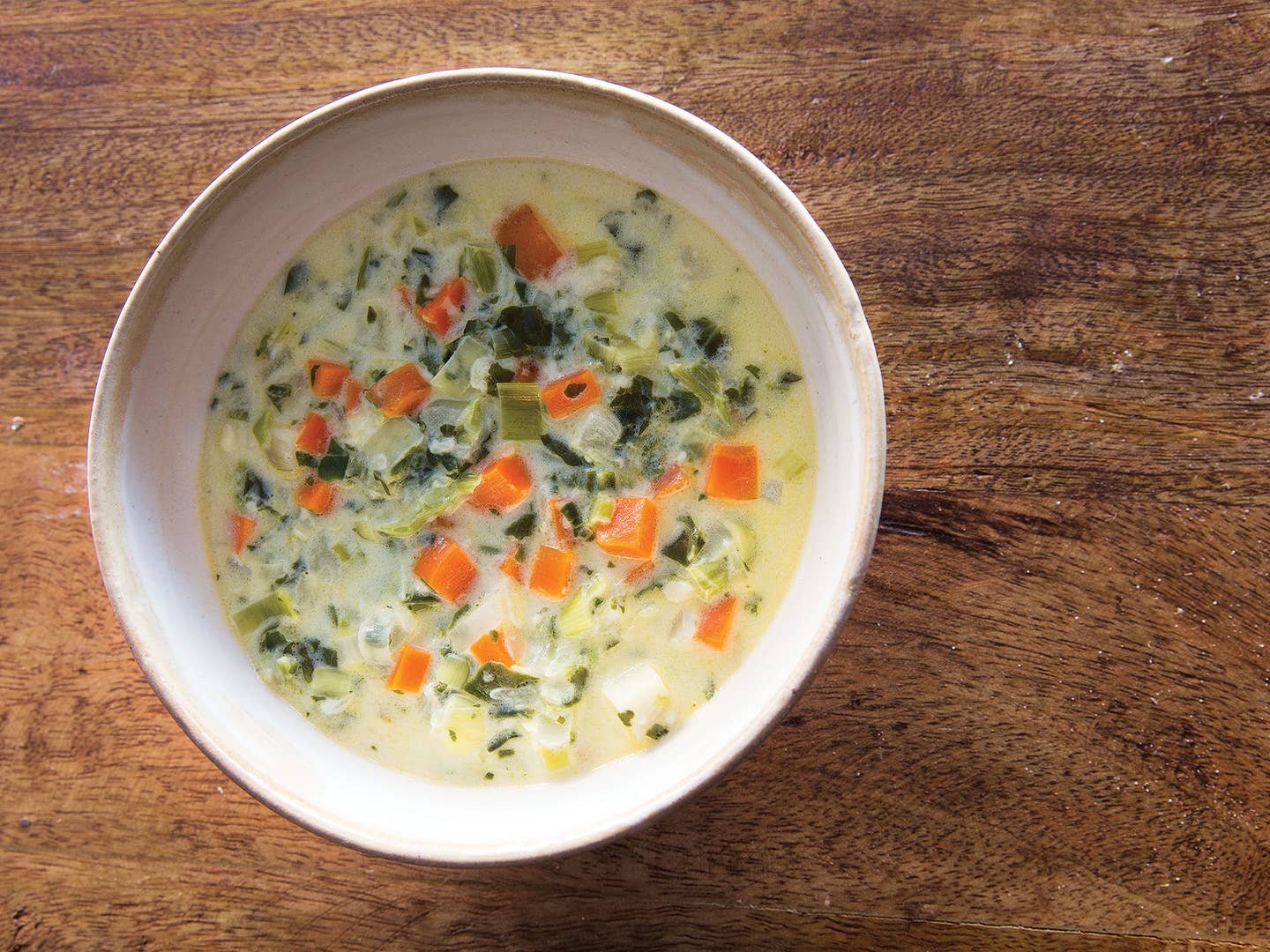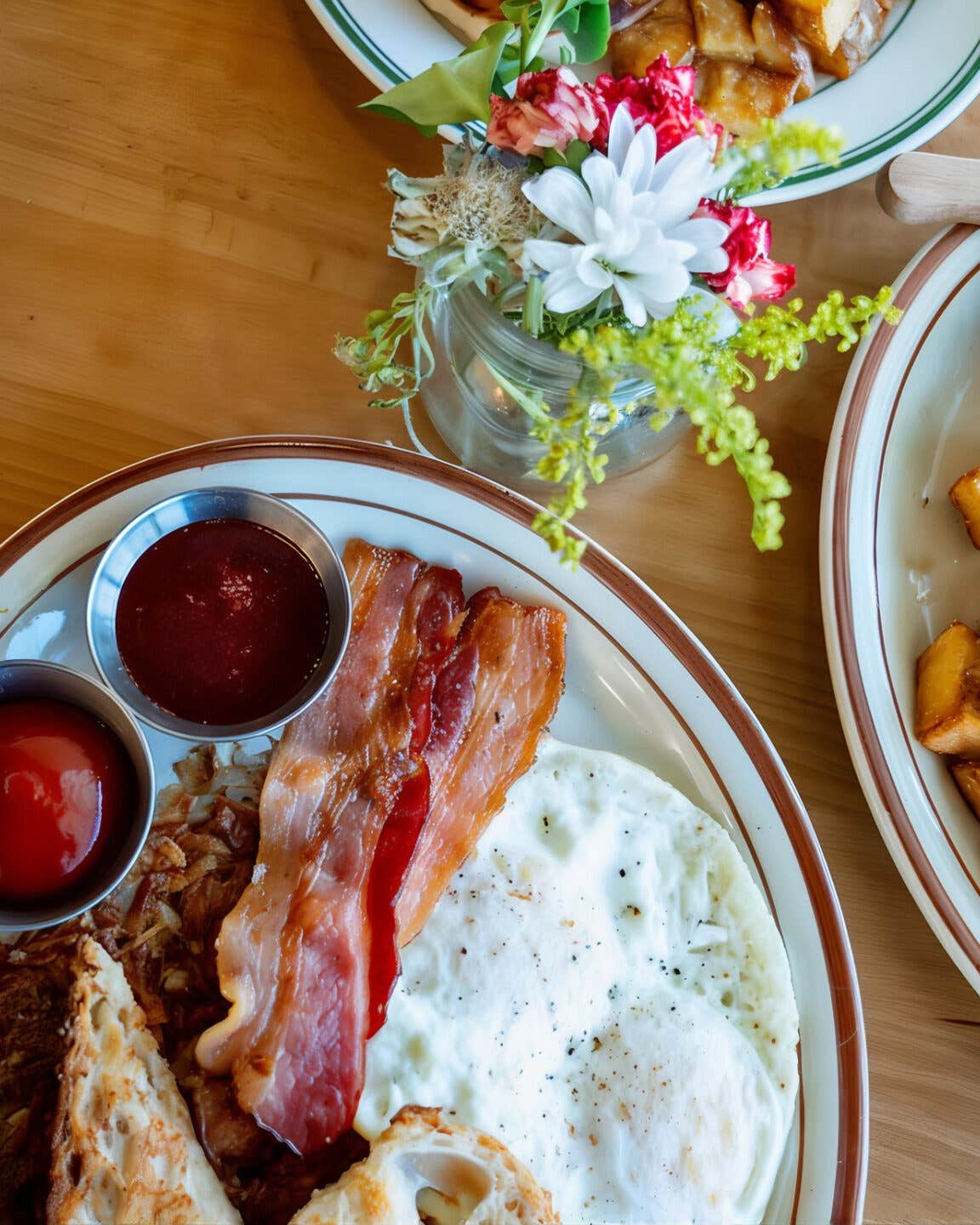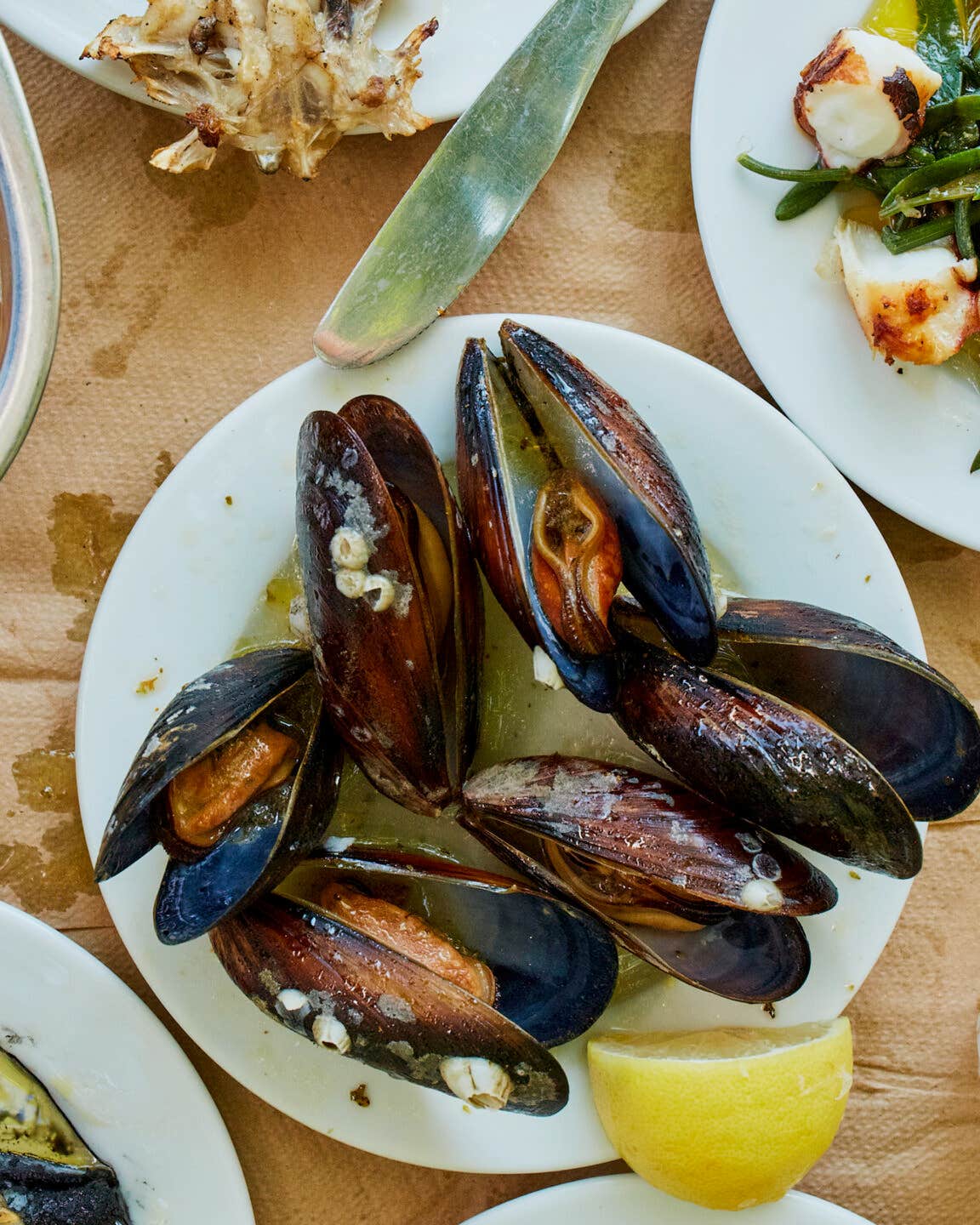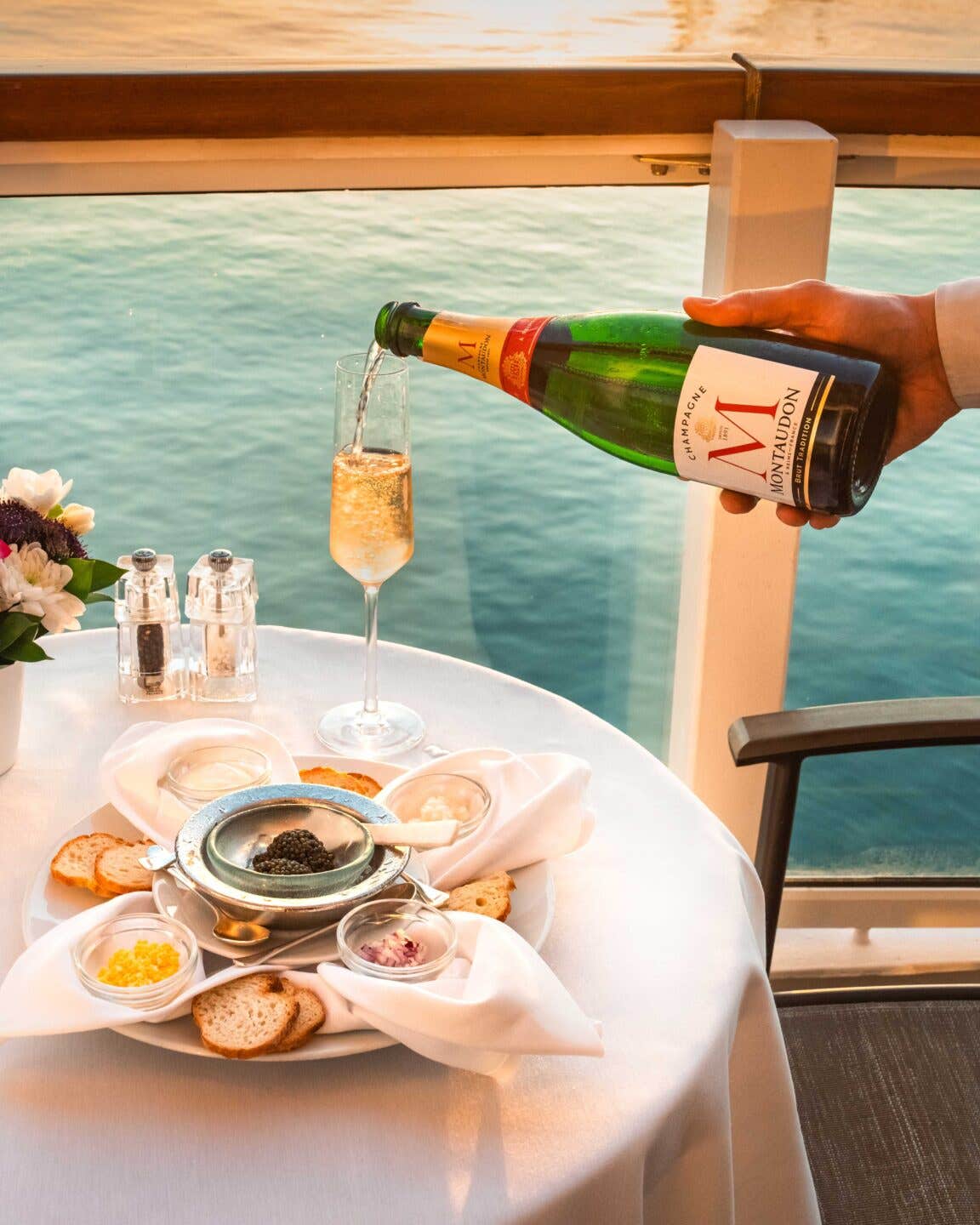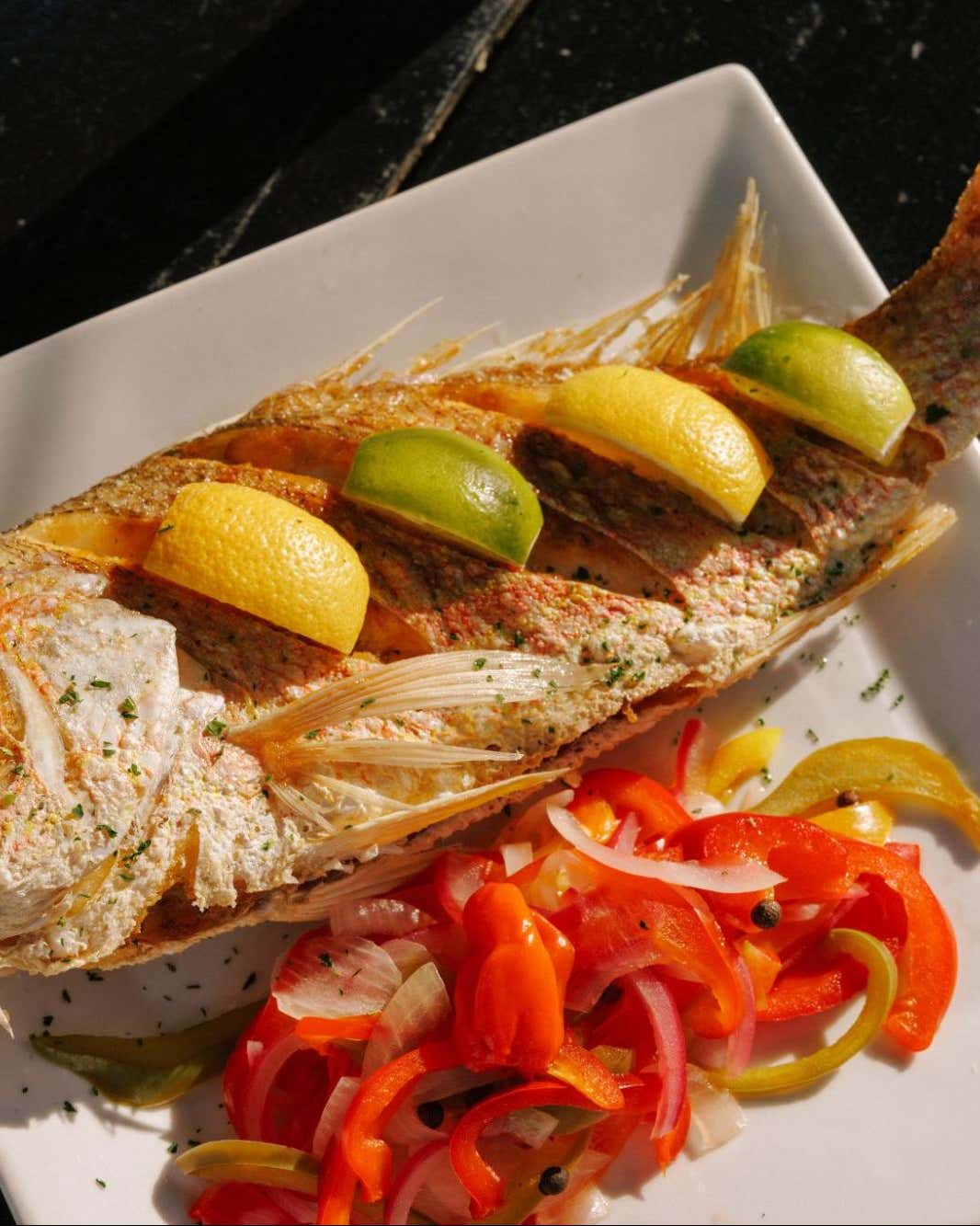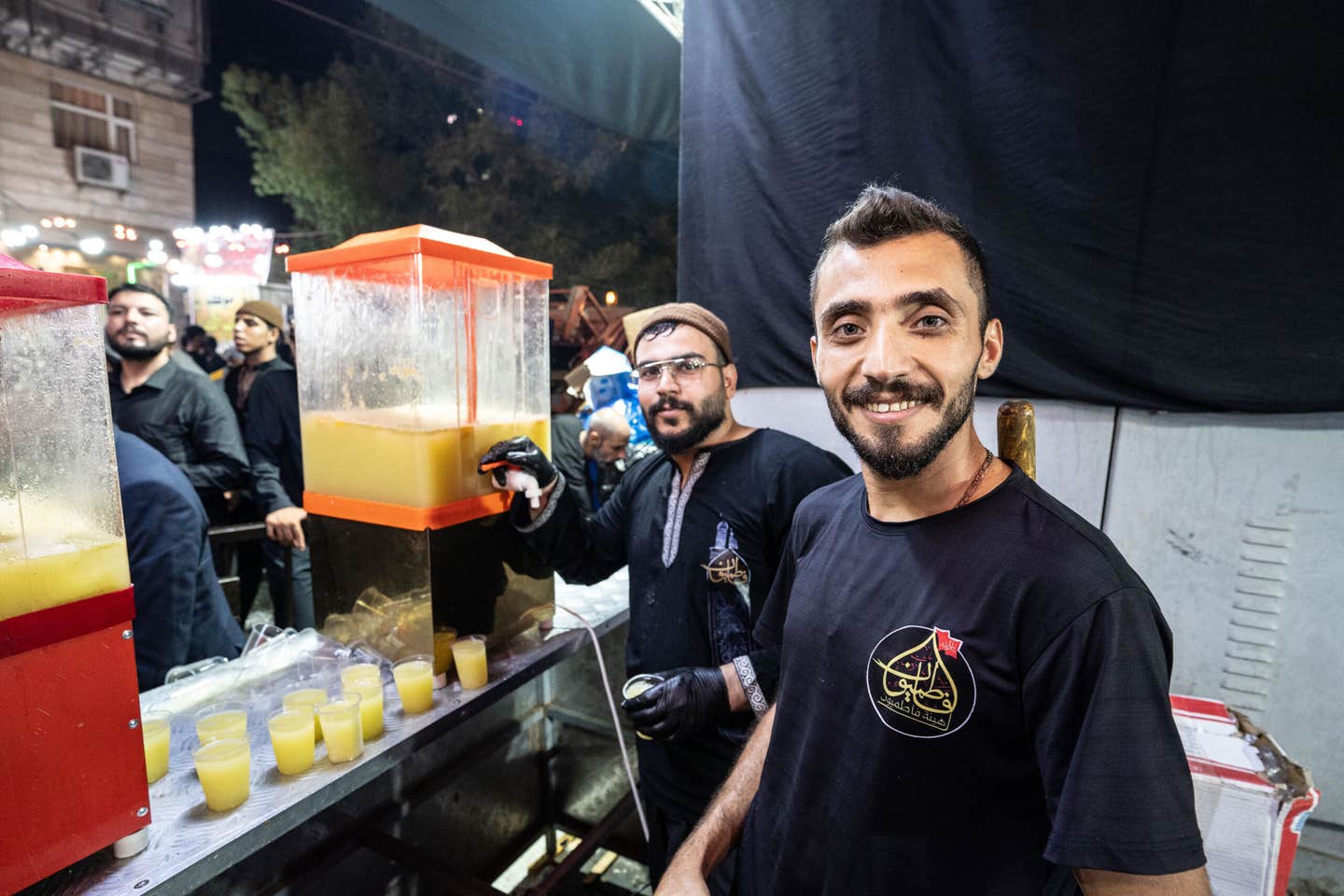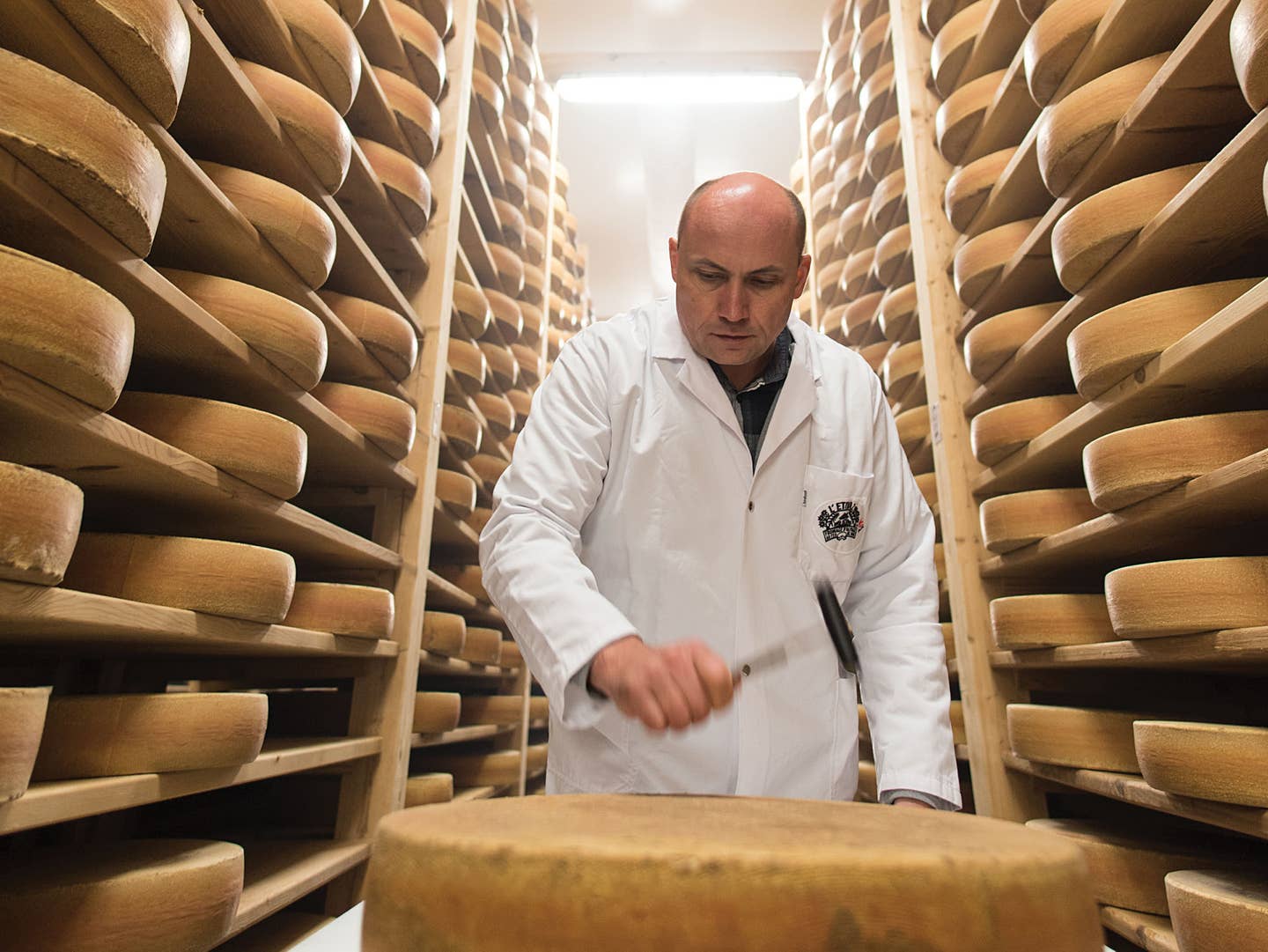
Meet Switzerland’s Breakaway Cheesemakers
In L’Etivaz, a group of families disillusioned with Gruyère’s modernization created their own appellation with its own strict standards. Today, their descendants keep the tradition alive, making highly sought after cheese in copper kettles over wood fires, high in the breathtakingly beautiful Alps
Every summer day, cheesemaker Stéphane Henchoz and his 55 cows have a routine.
It begins at 5:30 a.m. in his seasonal chalet high in the Swiss Alps, when Henchoz wakes up and turns on the 20-watt bulb in his kitchen. (Utility wires are nonexistent here at 5,800 feet, so a small generator provides the power.) After a breakfast of bread and heavy cream that he eats straight from the pot, Henchoz heads off to round up the cows. The animals graze and sleep farther up the mountain, in meadows blanketed with shaggy wild grasses and iridescent wildflowers, some of which grow knee-high. Once Henchoz and his border collie have guided the herd back into the stables, he and his girlfriend, Natasha, begin milking. They fill a huge copper vat that hangs over an open flame, and spend the next hour heating, stirring, and straining, until the liquid is transformed into three 50-pound wheels of L'Etivaz cheese.
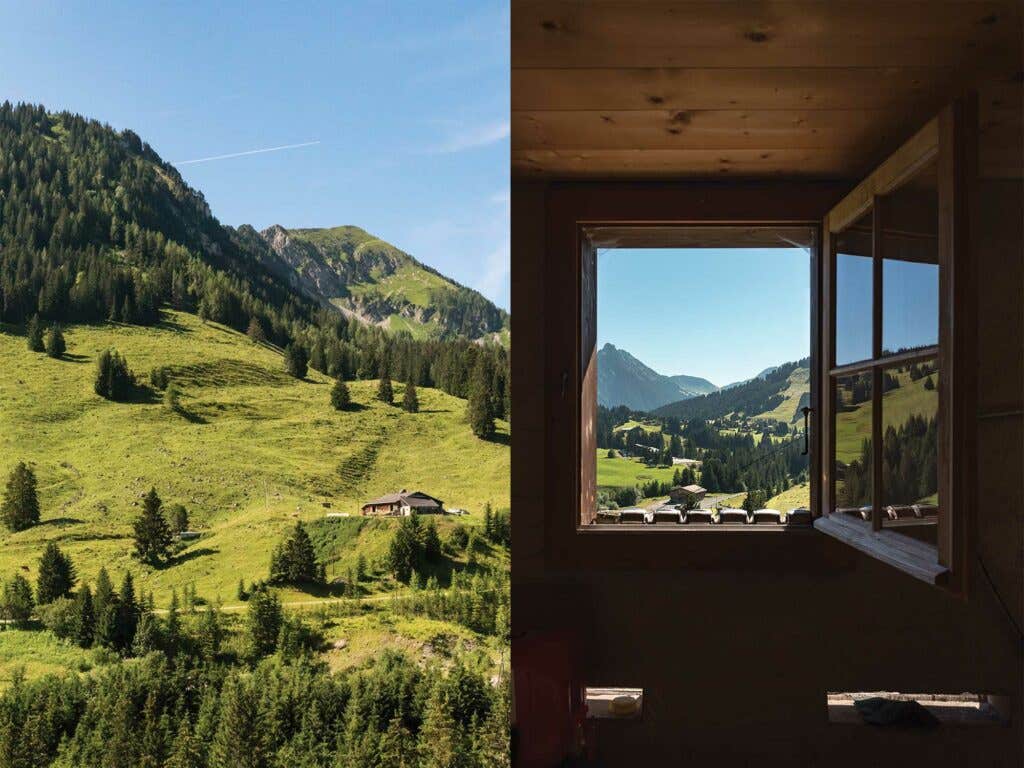
If you've ever tasted L'Etivaz, you might have guessed that it's crafted over a wood fire using a technique that has hardly changed for centuries. A little bit smoky and a little bit flowery, this rich, raw-milk cheese is an old-school cousin of Gruyère, the better-known Alpine brand made in much larger quantities a few miles up the road. In 1932, a group of families from the hamlet of L'Etivaz (from where the cheese takes its name) founded their own producer's cooperative; later they broke off from the Gruyère juggernaut and established their own strict standards, and in 1999 L'Etivaz became the first food product in Switzerland to be granted A.O.C. status (it's now called A.O.P., for appellation d'origine protégée). For Henchoz and his fellow L'Etivaz producers, this means adhering to exacting protocols.
The cheese can be made only at altitudes between 1,000 and 2,000 meters (3,280 to 6,560 feet), in the mountains near L'Etivaz in southwest Switzerland. Production must take place between May 10 and October 10 while the cows graze in the pristine meadows surrounding the cheesemaker' chalet d'alpage, a sort of mountain hut—farmhouse. The milk itself must be stored for no more than 18 hours and must never leave the property. In Henchoz's case it travels a distance of roughly 20 feet, from the barn to the main house. Every few days, he delivers a dozen or so cheese wheels to a vast communal cellar in the village, where they will soak for 24 hours in a brine bath before being aged in three different rooms, at three different temperatures and humidity levels, for a minimum of 135 days.
Anyone who's ever seen a perfectly symmetrical Swiss haystack, to say nothing of a Breitling chronograph, knows that the Swiss have a thing for order and precision. Even the woodpiles in this part of the Alps are marvels of obsessive exactitude, the logs seemingly cut and stacked to the millimeter. The L'Etivaz cheesemakers' cooperative follows a long list of guidelines down to the type of fabric required for cheesecloths (100 percent linen only, please). “It's how we maintain quality,” says Pascal Guenat, who runs the cooperative and is L'Etivaz's one-man cheese police. He is often seen prowling the storage cellars in a white lab coat.
Yet as I witnessed this summer while spending time with a half-dozen cheesemaking families, L'Etivaz's magic ingredient is a certain handmade, homey realness. Even in Switzerland, there's a limit to how much one can regulate something as natural and complex as an artisanal cheese. Currently, 72 families produce L'Etivaz, following the same rules, but the final product inevitably varies from household to household, due to minute differences in technique or terroir. Guenat, who every November grades each cheesemaker's output on a scale of zero to 20, makes no attempt to suppress the inconsistencies. He jokes that a well-trained palate might be able to pinpoint the exact pasture where each wheel of L'Etivaz originates. (Extra smoky with a hint of dandelion? Must be Pierre's. Creamy with top notes of moss? Jean-Luc's, of course.)
“In the end, a lot of cheesemaking is about instinct and feeling,” says Frédéric Chabloz, who has been producing L'Etivaz for three decades in a small, fragrant room off his kitchen. “If you get too worried about the rules, then people will taste the stress in the cheese, and that's not good.”
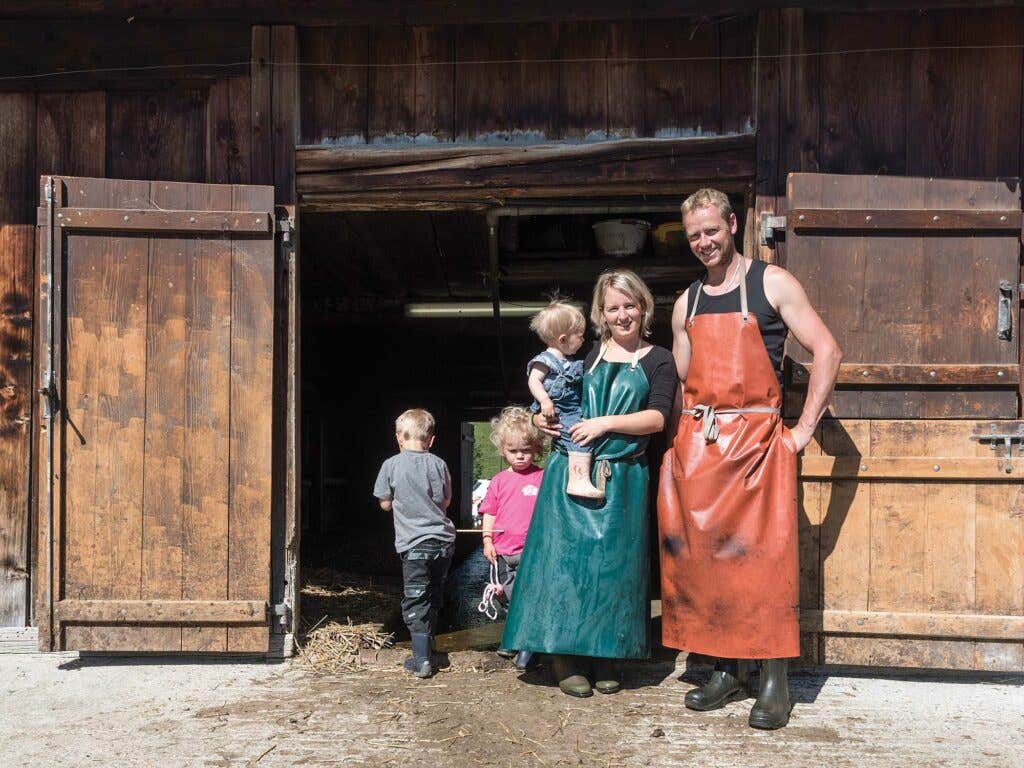
I arrive at the chalet of Frédéric and Marina Rozat just in time for breakfast. The Rozats are in their 30s and blond, with three even blonder children. Their main house is in the nearby town of Châteaux-d'Oex, but every year in late spring they relocate to this tableau of dreamy Alpine rusticity, complete with antique brass cowbells hanging from a rafter. The Rozats' living quarters and stables occupy the same building, so the family sleeps just above its herd of shuffling, sighing cows. While Frédéric tends the fire under a cauldron, Marina sets out some just-skimmed cream (a 50 percent fat product called crème double) that we eat from a handmade wood pot, called a diètzè, using hand-carved wooden spoons that have hung in the kitchens of L'Etivaz cheesemakers for as long as anyone can remember. Skimmed off the previous evening's milk, Alpine crème double doesn't keep long or travel well, and it solidifies when refrigerated, but when served fresh and slightly chilled, it's a velvety, buttery wonder.
As I move from chalet to chalet, I begin to see why the production of L'Etivaz has always been a family operation: With its massive equipment and finicky fabrication method, it's not something anyone could ever attempt alone. The local school district allows cheesemakers to pull their children out of classes a few weeks early every May so that the whole clan—parents, kids, animals—can head up the mountain together. Some families have two or three chalets, at varying altitudes, so they can move their cows higher as the summer snows melt and delectable wildflowers sprout. And in many households the kids start pitching in at the cauldron around the same time they tackle their first Asterix comic book.
When I knock on Blaise Chablaix's door, his milk has just reached the required 134 degrees and the curds have attained the right level of squeakiness when chewed; I watch as he hoists three massive sacks of steaming white mush into cheese molds, with the help of his 8-year-old daughter, Alice. She tells me she's already decided she's going to be a farmer when she grows up, then offers to give me a tour of the barn. There I'm introduced to the calves, the pigs, and the black Pekin chickens. Alice says they're her favorites “because they make good eggs, and because they walk funny.”
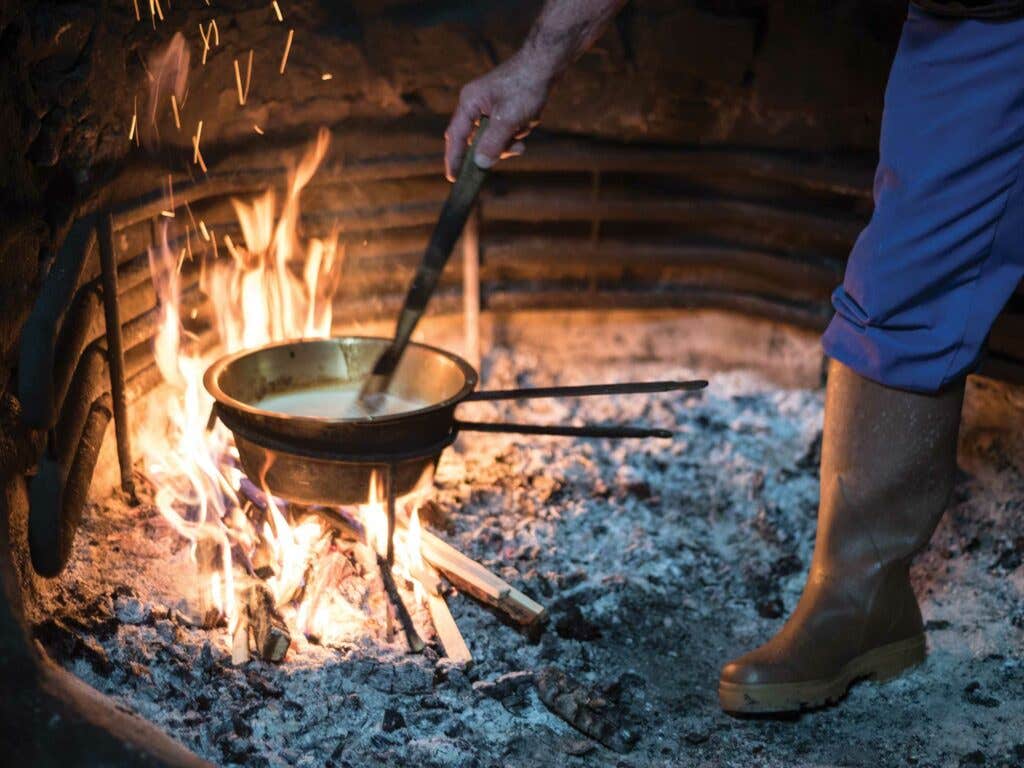
For all its idyllic attractions, the life of an Alpine cheesemaker requires sacrifices. “We're always happy to head up the mountain every spring, but we're also happy to return home in the fall,” says Marina Rozat. Wi-Fi, restaurants, and neighbors, among other things, are scarce at this altitude. Guenat tells me that this past June, the day after Switzerland tied France in the European soccer championship finals, the entire country was dissecting the match play by play. “But when I stopped by one chalet, the cheesemaker barely knew that there had been a game. He said, ‘Oh yeah, who won?’”
There are some significant upsides to the isolation, as I see when I join Henchoz on his spectacular herding route, which overlaps with some of Switzerland's prime hiking trails and offers endless panoramas of snowy peaks and piney valleys. This is a cow's version of paradise, with unlimited green things to munch on and nary a fence in sight. Henchoz tells me that many cheesemakers rent extra cows—some that have never experienced mountain-pasture living—from larger farms to supplement their summer herds. Upon arrival they're put through a three-week detox to ensure their milk is L'Etivaz-pure; for some, walking up and down the upper Alps' steep paths is a challenge. “They adapt, but it can take a bit of time,” says Henchoz.
People hailing from non-Alpine areas have their own adjustments to make, particularly if they're not accustomed to eating cheese and pure cream three times a day. I'd heard that the Swiss consume more cheese than anyone else in the world—47 pounds per capita annually—but that's undoubtedly a lowball figure around L'Etivaz, where fondue remains a staple even in high summer. The classic fondue blend contains 80 percent L'Etivaz and 20 percent Vacherin Fribourgeois, plus a touch of dry young chasselas or another white wine from the Vaud region, an hour to the west.
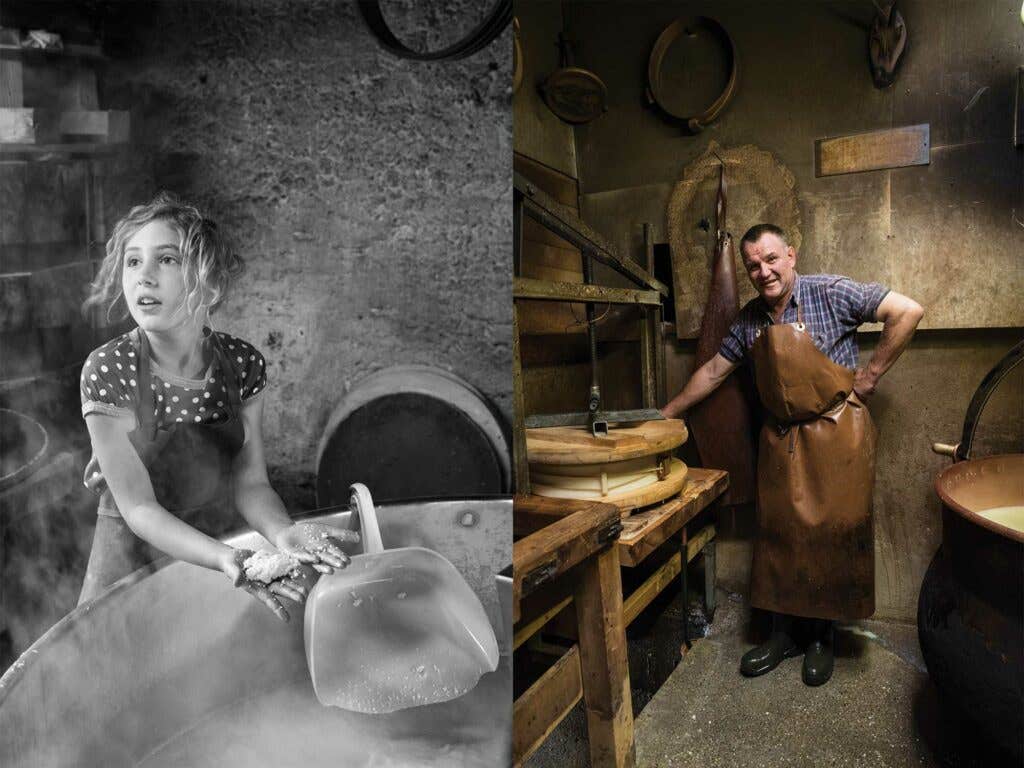
Unlike Gruyère producers, who continue making cheese through the fall and winter—while feeding their cows hay instead of fresh grass, among other sacrileges—L'Etivaz cheesemakers must find alternate ways to earn a living during the off-season. Many continue farming at their main houses down in the valley; others work as carpenters or mechanics. And while they all tend to enjoy good food and drink, they are not culinary snobs or big talkers. It's only after a few glasses of wine that you might catch one of them describing L'Etivaz as a way of life as much as a cheese.
During dinner at the picnic table in Henchoz's tiny kitchen (his squat cement-and-stone chalet, reachable only by cable car, is one of L'Etivaz's most remote), I meet Romain, a 27-year-old family friend who began pitching in at the chalet when he was seven. Now a building contractor, he comes back for a few days every summer to milk cows, stack wood, and spread manure, because he wants to. "It's just another world up here—no cars, no real stresses," Romain says. Our meal, a sublimely creamy vegetable soup called soupe de chalet, is a reminder of the direct correlation between simplicity and contentedness: Henchoz places the pot in the middle of the table and we each dip our spoons in, holding a slice of bread with the other hand to catch the drippings.
As we slurp our way to the bottom of the pot, it occurs to me that I haven't yet heard what one might expect of a tradition-bound place like L'Etivaz: that the old ways are gradually dying out, the younger generation fleeing to the nearest dynamic city—in this case, Lausanne—to launch production companies or fondue-delivery apps. In fact, whenever a chalet here comes up for sale or rent, there are multiple offers, including some from locals in their 20s.
Frédéric Chabloz once considered moving away, and even scouted farms in the United States where he was wowed by agriculture's scale and high-tech prowess. (“South Dakota—so much wheat, unbelievable!”) In the end, though, he came back to L'Etivaz for good.
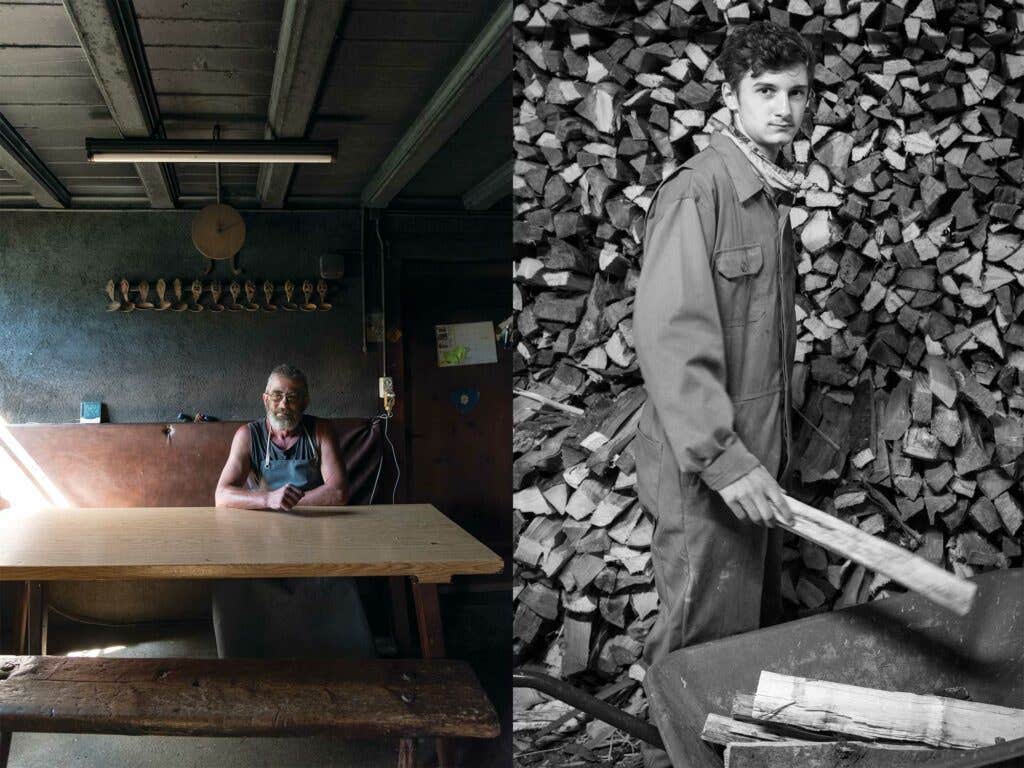
“The life up here is not for everyone,” he says as he tightens an iron press to perfect the shape of the morning's cheese. “It's a lot of work, and many people would get bored. But you're in this beautiful place, you're surrounded by nature and your children, you're listening to the cowbells all day long.” He pauses. “And you're free.”
My last stop is the chalet of Henri-Daniel Raynaud and his wife, Aimée, a stone refuge at 5,400 feet, with views as far as Mont Blanc. Before lunch I watch as he and his two dogs herd cows down the steep path behind the house, his shouts of "Allez, op-op-op!" echoing off the rocks. (His grandkids have nicknamed him Op-Op.) I'm here to taste Raynaud's fondue de chalet, a recipe that's been in his family for generations. It's a heavy dose of both cream and cheese, and eaten with spoons instead of fondue forks, since pieces of bread are mixed straight into the iron pot as the cheese melts. When Henri-Daniel steps into the fire pit in his rubber boots and starts stirring in huge handfuls of cheese, he laughs and says, "Does it look like we're a bunch of cavemen?"
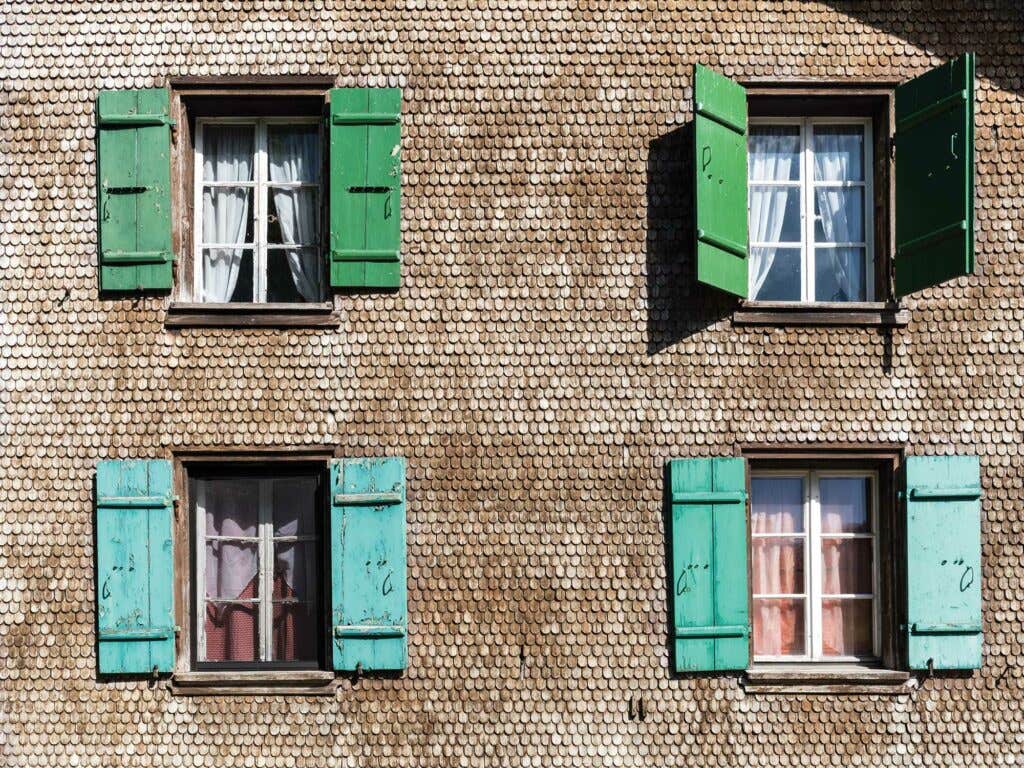
Indeed, cooking doesn't get much more elemental than this: Not only is the whole dish made in one pot, but its ingredients come almost entirely from cow's milk, and the technique consists of one thing: nonstop stirring. Is it a coincidence that this is the most satisfying meal of my trip?
Twelve of us sit at the kitchen table, including a cousin and two family friends, plus a young Ecuadorian who's here studying sustainable farming. After Raynaud says grace, the conversation topics range from Pokémon Go to the finer points of wood stacking; there is also some gentle mocking of French people, Gruyère makers, and vegans. ("Animals were not put on earth just to be looked at," Aimée says.) By the time dessert comes out—chocolate cream pudding and meringues, both topped with double crème—I'm no longer thinking dark, cardiovascular-related thoughts. I have surrendered to the stupor of dairy overload and am simply asking for second and third helpings.
Raynaud smiles as he fills everyone's glass with a shot of eau-de-vie. A light rain falls, the cows are in the barn, and his granddaughter is trying to climb onto his lap with her favorite stuffed rabbit. Most days, he and Aimée run their farm on a fairly strict schedule, but he knows that if his afternoon tasks are delayed by an hour or two, or even three, all of Switzerland will not implode. “Today,” he says, “I might even take a nap.”
How to Cook With the Ultimate Swiss Cheese
Swiss Cheese Soup
A traditional dish enjoyed year-round in the Alps of southern Switzerland, this homey soup takes its name from the mountain huts where it’s commonly made. Typically incorporating cheeses from the region, this version is fortified with L’Etivaz (which can be found at specialty cheese shops) and heavy cream. If you can’t find L’Etivaz, substitute Gruyère instead. Get the recipe for Swiss Cheese Soup »
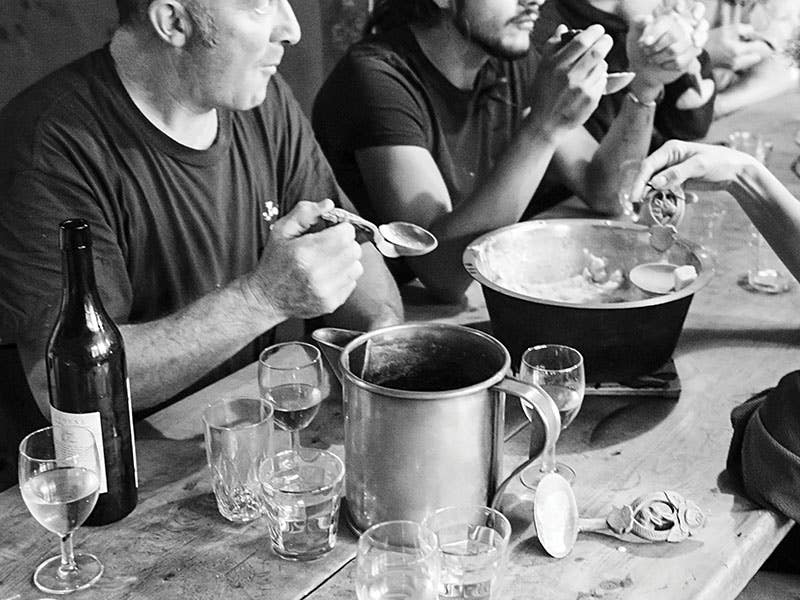
Keep Reading
Continue to Next Story
